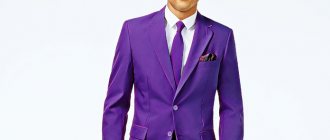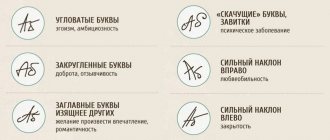Eyes are the mirror of the soul and heart. Indeed, we ourselves often brought the following argument to our words: “Yes, I can see right through his eyes!” Perhaps we ourselves were told, “I can see you in your eyes, you can’t deceive me!” It is not easy to explain such an internal precise decoding of a look, but it is so precise that it simply amazes and encourages the study of human nature. If a person is emotionally, mentally and physically healthy, then you can really read his eyes and tell him the argument “I can see you in your eyes.” Many who hide their identity master the art of deception. But that is another story. So, the article will describe the look and its interpretation. In this article, the characteristics of gaze include everything that concerns vision, out of order: pupils (mainly their sizes) brows, wrinkles around the eyes and on the forehead, direction, intensity and duration of gaze, “mood” of the look, etc.
The Function of Gaze: Cultural and Historical Significance in Society
The manner of looking is of great importance during communication. But representatives of different cultures have their own etiquette regarding the permissibility and appropriateness of direct eye contact. Thus, in Western European countries it is customary to look long and intently, expressing trust and interest in the conversation. A similar tradition is common in Russia and other CIS countries.
Residents of the Far East regard an attempt to make eye contact as disrespect and even a threat. This is especially pronounced in Japan: during a conversation, the Japanese specifically look to the side so as not to accidentally look at the interlocutor. When studying the culture of views, one should take into account national characteristics, otherwise one can misjudge intentions and provoke a quarrel.
Eyes as part of self-knowledge: the power of the gaze
Look into my eyes and I will tell you a lot about you... In fact, you can learn a lot about a person by the play of your eyes and visual contact. Here are some examples:
- The one who talks blinks more often than the one who is silent. If the opposite happens, then the interlocutor is most likely bored.
- Frequent blinking, which is so characteristic of women, does not signal her desire to please a man, as is commonly believed, but is a gesture of submission.
- A close, intense gaze, on the contrary, will signal the strength and charisma of the beholder. Actor Michael Caine must have trained for years to achieve this look.
Staring closely can confuse your interlocutor. An inquisitive look will cause uncertainty in the interlocutor. Many businessmen test each other with their gaze at the first meeting: whoever looks away first loses. After this, it becomes clear who has weaker nerves (or who has something to hide).
But the principle applies here too: only the dose makes the medicine poison. Psychologists from the University of Freiburg came to the following conclusion: staring will lead a person to the desire to resist possible influence. We can say that such a look makes a person stubborn and unyielding. Direct, continuous eye contact will awaken in a skeptical interlocutor the desire to contradict or completely reject the opponent’s opinion.
The fact that most people cannot maintain prolonged eye contact is supported by research conducted in 1977 by Donald Elman of Kent State University. The scientists chose an intersection with a traffic light for the experiment. At the same time, they looked closely at the drivers when the light turned red. As a result of the study, the following conclusions were drawn: drivers who experienced this look started faster when the light turned green. However, a smile could neutralize the driver's reflex to escape.
The eyes as a part of self-knowledge manifests itself even in these cases, because by tracking your own gaze, you can monitor your behavior. Reveal the hidden traits of your character and delve into the root of their occurrence, isolating the most important thing, what forms the basis of your personality, your uniqueness.
What does the size of the pupils indicate: what is the interlocutor hiding?
During a conversation, the size of the pupils may change dramatically. This is due to the emotional attitude towards the interlocutor or the subject of conversation. Dilated pupils are a sign of strong emotional upsurge: the partner is looking at what he likes. This is how lovers look at the object of their passion or children look at a desired toy. Constricted pupils are a sign of detachment and emotional coldness.
When assessing pupil size, it is important to take into account third-party factors. So, in bright light, the pupils narrow greatly, and in semi-darkness they dilate. Some diseases, for example, increased intracranial pressure, can affect the width of the pupils.
Secrets that our pupils reveal about us
Eyes can easily reveal a person's true intentions and feelings . Anyone who looks carefully into the eyes can learn a lot about the interlocutor. For example, whether the other person finds him attractive or not, whether he is thinking about something important or is simply not interested in the conversation... Almost always the discussion is about whether the pupils are dilated, and whether the eyelids are raised or not. Pupil dilation is a sign of sympathy , as ethologist Irenius Eibl-Eibslfeldt was able to prove.
Wide-open eyes radiate calm and spread a peaceful atmosphere not only when surrounded by loved ones, but also when trying to flirt. And if you use this technique purposefully, then you can, for example, when reading a report, attract the attention of listeners and arouse their interest. Many TV presenters use this all the time.
Let's look at 9 things that, according to research, you can understand about a person from his pupils:
I'm interested in you
The basis of any courses on attracting a partner: look into my eyes and I will accurately determine how interested you are in me. In fact, since 1977, according to research by Irving Maltzman, it has been known that our pupils dilate when what is said to us is interesting . During the experiment, subjects were asked to read texts of various orientations: erotic, cruel and neutral. When reading each text, the pupils dilated, but after a short period of time they contracted again, with the exception of reading text of an erotic nature.
Are you flirting with me
This action of looking is closely related to the previous point and is its continuation. Interest turns into something more.
I don't like you
If the pupils narrow, then this is a sure sign that you are uninteresting and, perhaps, even unpleasant to your interlocutor . Eckhard Hesse (“Pupillometry”) conducted the following experiment in 1972: The subjects were shown pictures of injured children. At first, the pupils of the experiment participants dilated significantly under the influence of shock from what they saw, then they narrowed greatly, since the images were unpleasant and repulsive to them.
I need to think seriously
Ask a person how much is two and two, and you will not see much change in his eyes. But if you ask him to explain the theory of probability to you, his pupils will noticeably dilate. According to research by Eckhard Hesse and James Polt (1964), the more active our brains are, the more our pupils dilate .
My brain is completely overloaded
Perhaps this will happen when asking about the theory of relativity, but still, if you ask your interlocutor an unsolvable puzzle, his brain may temporarily reduce its activity due to overload. In this case, the pupils narrow at lightning speed. When the brain is 125% engaged, the pupils become smaller .
Brain damaged
This happens as a result of accidents. This is why doctors first check the reaction of the pupils to light. During normal brain function, both pupils are the same size, rounded, and respond quickly to light . If the brain is damaged, then one of the listed parameters will deviate from the norm.
I'm more liberal than conservative
It is clear that political views cannot be determined based solely on the study of views. Most likely, the point here is indirect sympathy and the above-mentioned reactions of the pupils to various situations. For example, in 1972, during an experiment, Horace Barlow showed subjects photographs of liberal and conservative politicians. Interestingly, the pupils of liberal-minded participants in the experiment dilated every time they saw liberal politicians and shrank when they saw conservatives . In the case of conservative participants, the opposite was true.
Something hurts me
Our eyes react to pain in much the same way as to emotional shock. Richard Chapman and his colleagues conducted an experiment with volunteers using a stun gun. As it turned out, when pain occurs, the pupil enlarges by 0.2 mm .
I did drugs
Classics of the genre: drugs affect changes in the size and speed of reaction of the pupils . If a person is under the influence of cocaine, amphetamine or LSD, the pupils are enlarged by approximately 6 mm. Under the influence of alcohol, on the contrary, they are reduced in size. This fact is well known to police and traffic police officers. That is why when checking documents they look so carefully into your eyes. Obviously, there can be no question of sympathy here.
As you already understand, in all cases we are dealing with the dilation or constriction of the pupils. Most often, the pupils are enlarged when a person experiences positive emotions and, accordingly, constricted when negative emotions occur . But using only this parameter does not provide a clear understanding of what a person actually feels. The reaction of the pupils should be considered based on a certain situation and including other parameters - then it is almost possible to determine the true feelings and intentions of the interlocutor from the eyes.
Gaze frequency and duration: how to understand signals
The duration of looking at a partner within European culture has different meanings, depending on the nature of communication. The following types of views are distinguished:
- Social - medium duration, aimed at the eye or mouth area.
- Business - direct, long-lasting, expresses the desire to reach an agreement.
- Intimate - intermittent for women, long-lasting for men. Used to attract the attention of an interested person.
A direct gaze directed downwards at a partner is a signal of threat, a warning of an attack. This is how dominant individuals look, seeking to assert their position. In friendly and business communication, a challenging gaze should be avoided so as not to accidentally provoke aggression.
Conclusion
Eyes as part of self-knowledge are nothing more than the perception of oneself through the prism of the surrounding world . Take advantage of the results of the experiments, conduct your own research in this area, and observe the behavior and gaze of your acquaintances. By learning to feel the world and the people around you, you will get closer to your own soul, you will be able to grasp more information and learn many things.
You can know yourself guided only by your own feelings and views. Whether your eyes “burn” or “go out” is a reflection of your thoughts, personality and character. Get to know yourself every day and don't stop there. Develop, grow above yourself and enjoy every day!
What does winking with one or two eyes mean, frequency and speed of blinking
Winking during business communication is unacceptable. This is an informal gesture that is only allowed by people in informal relationships. A wink is a signal to the interlocutor that an agreement has been reached, encouragement, and assurance of one’s support. In Asian culture, winking is a form of insult.
The frequency of blinking speaks about character: frequent blinking indicates uncertainty, a tendency to submit, rare blinking indicates self-confidence, arrogance. Before assessing the blink rate, you should find out whether the interlocutor has vision problems. With myopia, frequent blinking is an uncontrollable symptom that is important to consider.
Brows.
I also see it in the eyes and in the eyebrows. The eyebrows follow the emotions of the eyes, as if there is a string between them. Some eyebrow movements have already been discussed above. The bottom line is that moving eyebrows indicate that there is emotion towards you, while stationary eyebrows indicate that you are not arousing real emotions in the person. Different emotions, positive or negative, eyebrows in motion. If there is indifference and indifference, the eyebrows do not move.
You need to take into account many factors, facial expressions and body movements. This is difficult, because each person is individual and may have his own gestures, which need to be interpreted individually, knowing him personally and well. I see the expression in your eyes will add persuasiveness to your words if you can provide more pressing evidence. Therefore, good luck to you and your friends in studying this fascinating phenomenon - the gaze!!!
See useful articles below.
Direction of gaze: what the interlocutor is thinking about
The position of the eyes during a conversation reveals the intentions of the interlocutor and the degree of truthfulness. If the eyes are directed:
- up to the left - the partner recalls events that actually happened;
- up to the right - an attempt to imagine the subject of conversation, in reality it does not exist;
- to the left - an attempt to remember auditory information received earlier;
- to the right - the interlocutor is lying, trying to invent non-existent memories;
- down - the interlocutor is focused on thoughts, conducting an internal monologue.
This feature is suitable for right-handed people. When talking to left-handers, you should evaluate the meaning of direction in reverse.
Why does a man look into your eyes without looking away?
© Getty Images Pro
He finds you attractive.
If you notice that he mostly looks at you and there is no obvious reason to dislike you, then he most likely finds you very attractive.
In this case, there will likely be other signs and gestures that indicate his sympathy, such as:
- His pupils dilate when he looks at you
- His feet are pointed in your direction, even if you are not in close proximity.
- Trying to get closer to you
- Adjusts clothes or hair when he sees you
- Asks his friends about you
- Quickly turns away and smiles when you notice him
- Feels nervous when other men are around you
- Laughs and looks at you to see if you are laughing too.
- Stands next to you when talking
- Speaks in a lower voice
- Blinks more often when talking to you
- Touches you more often
- Maintains eye contact with you longer than usual
- No negative cues such as squinting eyes, tense jaw, or crossed arms
Wants to know if you like him.
It's also possible that he finds you attractive but isn't sure if you like him.
This is the reason why he may look at you so much in an attempt to find out what you think about him.
If this is indeed the case, pay attention to the signals mentioned above.
How to decipher the way you look at your interlocutor during a business meeting or date
During a business conversation, you should correctly evaluate the visual signals of your interlocutor. A long, direct gaze reveals a domineering nature, a desire to subjugate interlocutors. It can only be allowed by a superior in the direction of a subordinate. Downcast eyes (especially in combination with a bowed head) are a symbol of submission. Between equal partners, it is acceptable to exchange short, friendly glances to complement communication.
During a romantic date, a man looks at a woman hidden: direct looking is regarded as a threat. The male gaze is defiant, so he can only respond to a woman’s attention, but not directly show interest. For romantic communication, a woman is the initiator. She can openly look at the man she likes, inviting him to get acquainted. It is acceptable for a woman to look directly and defiantly - this is not a threat, but interest.
Typology of views
- Formal - responsible for the business atmosphere. Aimed at the forehead.
- Secular - promotes the creation of non-stressful communication. Aimed below the other person's eyes
- Intimate – expresses people’s interest in each other. Aimed at the neck area, from the chest to the eyes.
- On top of the glasses - shows a critical evaluative attitude. Such a gaze has a negative impact on the interlocutor, who, in turn, tends to distance himself from the dialogue, for example, by crossing his arms over his chest or crossing his legs.
- A sideways glance indicates caution, which can be associated with tension and suspicion (in tandem with frowning eyebrows or downturned corners of the lips) or, conversely, with interest (subject to slightly raised eyebrows or a smile).
- “Empty” - can speak of embarrassment, shyness, bashfulness and indicate a lack of knowledge of the information necessary in the situation.
- “Doggy” - with an admission of guilt, a look from bottom to top may indicate secrecy, deceit, or discreet peeping.
Now you understand how much a look means. It can open up depths that you never even imagined!
Want to know more? Read about body language.
How to determine character traits by the way you look at your interlocutor
When studying the features of the psychological designation of gaze, the direction and duration should be assessed comprehensively. Thanks to this, you can draw up an approximate psychological portrait of your partner and notice a lie in time.
A person with a strong leadership character reveals a top-down view: he evaluates the interlocutor, “presses” with his gaze. Often high-ranking officials look at their subordinates with narrowed eyes. They have one eyebrow raised, their forehead wrinkled. This facial expression speaks of ambition, neglect, hostility. When a leader wants to break the will of his interlocutor, he looks for an exaggeratedly long time, using his gaze as a means of psychological pressure.
Cunning, adventurous people look straight, lifting their chin slightly. The gaze glides over the figure of the interlocutor, without lingering on the details. Such an interlocutor does not avoid direct gaze, but does not look into the eyes, but at the point between the eyes.
Individuals focused on the inner world look above the interlocutor. The direction of the pupils changes chaotically - as if they don’t know where to look. Often such avoidance of gaze is perceived as secrecy, but this is a manifestation of schizoid accentuation, a personal characteristic of the individual.
Looking up at your interlocutor is a symbol of humility and helpfulness. Shifting eyes - internal fear, a feeling of threat, anticipation of an attack. Sometimes lovers look this way, trying to hide their feelings.
There are people whose gaze is impossible to withstand.
Everyone's eyes are different. For some they are radiant and clear, for others they are cloudy or sleepy. At the same time, it has long been noted that a person is capable of influencing other people with his gaze. Sometimes you can hear: “He looked at me so much that even a shiver ran through my body.” With a glance you can caress, you can offend or outrage. The conclusion involuntarily arises that the inner light emitted by the eyes is material. That's why there is such a thing as the power of gaze.
There are people whose gaze is simply impossible to withstand. For example, Grigory Rasputin. Everyone who knew him noted the amazing quality of his eyes. It seemed that one could drown in them and lose one’s own self. No one could look into his pupils for a long time. People got confused and averted their eyes to the side.
Joseph Stalin also had a similar gift. Those who interacted with him closely described his gaze as snake-like. This is exactly how the leader looked at people, trying to understand their inner essence. At the same time, the formidable head of state did not tolerate it when his interlocutor averted his eyes. This was seen as insincerity and indicated dark thoughts.











